
This article is more than
3 year old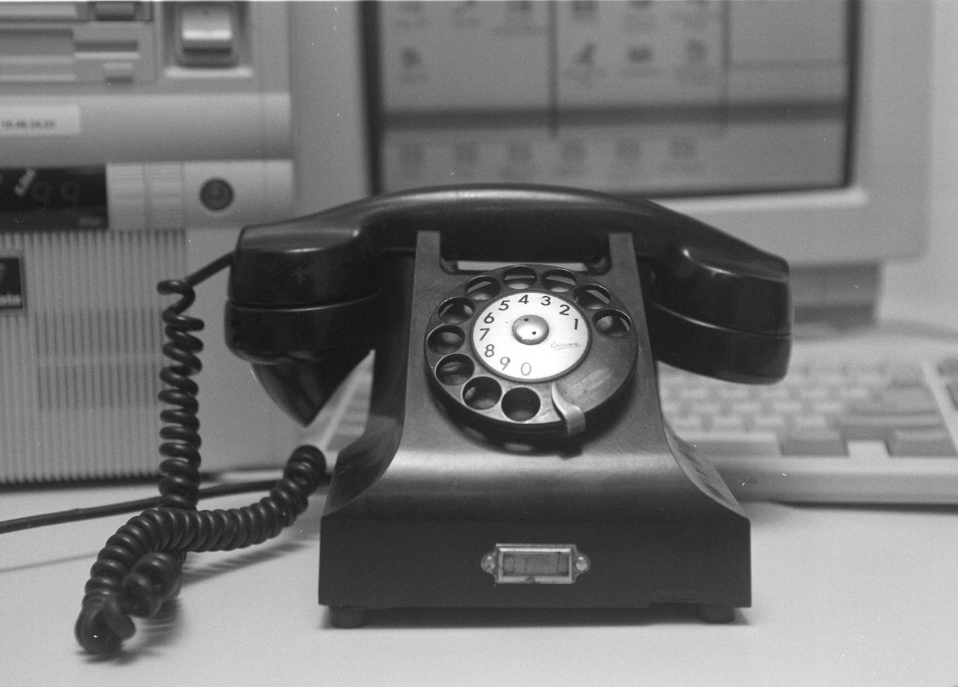
Do people still have landline telephones? Thus asks reader Sharon Claffey of Williamstown, Mass., echoing a question we’ve heard quite a bit this year.
We’re just as curious about that as you are, Sharon! And the startling answer is that about 73 percent of American adults lived in a household without a landline at the end of last year — a figure that has tripled since 2010.
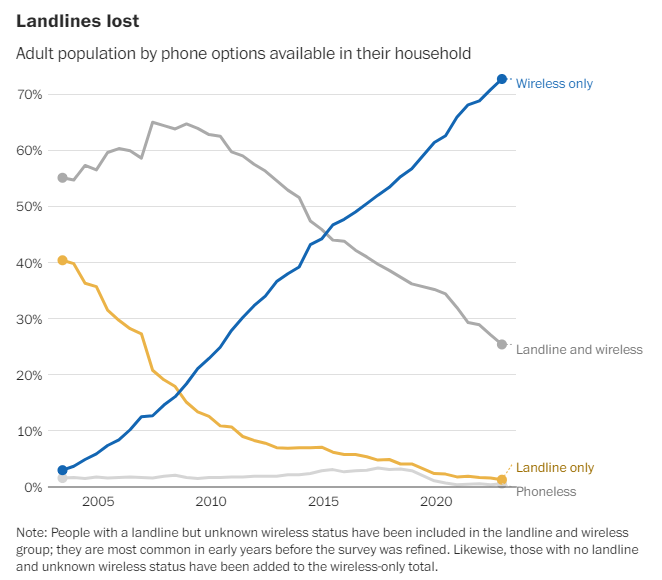
Until recently, we weren’t sure that data even existed. But it turns out we were looking in the wrong place. Phone usage is tracked in the National Health Interview Survey, of all things, the same source we used in previous columns to measure the use of glasses and hearing aids by our fellow Americans.
How did telephones wind up in a health survey? It all began more than two decades ago, when Stephen Blumberg and his colleagues at the National Center for Health Statistics (NCHS) started fretting and sweating about a newfangled gadget called the cellphone. The Centers for Disease Control and Prevention conducts some of the nation’s most extensive phone surveys — used to produce vital information about rates of immunization, risky behavior, health care use and chronic conditions — and they worried that changes in telephone access could distort their results.
Blumberg, who now runs the National Health Interview Survey (NHIS), realized the survey was perfect for tracking changes in American phone habits. Since 1957, the Census Bureau has had full-time staff (827 of them in 2022) crisscrossing the country on behalf of the NCHS, knocking on doors to find folks selected for the interview, including those who don’t have a phone or whose number isn’t listed.
Sure enough, researchers found that phone usage is correlated with health, often in surprising ways.
“People who have cut the cord” — abandoning landlines to rely only on wireless — “are generally more likely to engage in risky behaviors,” Blumberg told us. “They’re more likely to binge drink, more likely to smoke and more likely to go without health insurance.” That’s true even when researchers control for age, sex, race, ethnicity and income.
Every six months, as new interviews roll in, Blumberg and his colleagues release an update. The latest shows that landlines are far more common among homeowners (34 percent have them) than among renters (15 percent), while Hispanic Americans (20 percent) are less likely to have them than their White or Black friends (30.5 percent).
Only 2 percent of U.S. adults use only landlines. Another 3 percent mostly rely on landlines and 1 percent don’t have phones at all. The largest group of holdouts, of course, are folks 65 and older. That’s the only demographic for which households with landlines still outnumber wireless-only households.
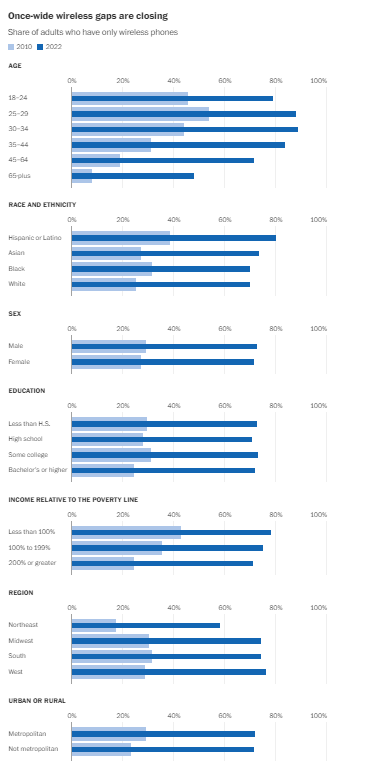
With the help of NORC at the University of Chicago, the NCHS also models household phone usage for all 50 states, albeit at a slight lag (the latest figures are from 2020). Landlines have been left behind most enthusiastically by folks in Idaho and places like it — rural, rootless, mountainous Western states — as well as Oklahoma, which has a decent claim to being both Western and mountainous (look it up), and Mississippi, which doesn’t. The states that cling to their physical phone connections are New York and places like it — dense, deeply rooted Northeastern states — as well as Maryland, which dangles from the bottom of the Northeast like Spanish moss.
But landlines aren’t what they used to be. As of 2021, fewer than a third of landline households still had what’s technically known as plain old telephone service, the copper wires that carry their own power and work during blackouts. Most landline homes now have VoIP (Voice over Internet Protocol), which usually sends calls through your internet connection.
In 2019, the Federal Communications Commission scrapped regulations that required telecommunications carriers to run copper wires to every home. The three-year transition period ended last year, and carriers are beginning to scrap the plain old systems and push customers to adopt cheaper-to-maintain, easier-to-upsell digital technologies.
Phone companies don’t really string copper anymore. AT&T’s legacy consumer voice and data business eked out $1.7 billion in revenue in 2022, company filings show — a sum almost 35 times smaller than the $60.5 billion that gushed from its wireless services business. Last year Jeff McElfresh, now the company’s chief operating officer, laid out a plan to reduce about half the company’s copper services by 2025.
None of this provides a grand unified theory of why the Northeast is the last place to give up its landlines, though.
For clues, we considered other measures of tech adoption. The Census Bureau’s American Community Survey doesn’t track landline phones, but it does track a few things we might expect to correlate with landline use. Specifically, it looks at who has home computers, smartphones and tablets. (Census also administers the National Health Interview Survey, as it does many government surveys, given its incredible expertise, but it’s the NCHS’s project.)
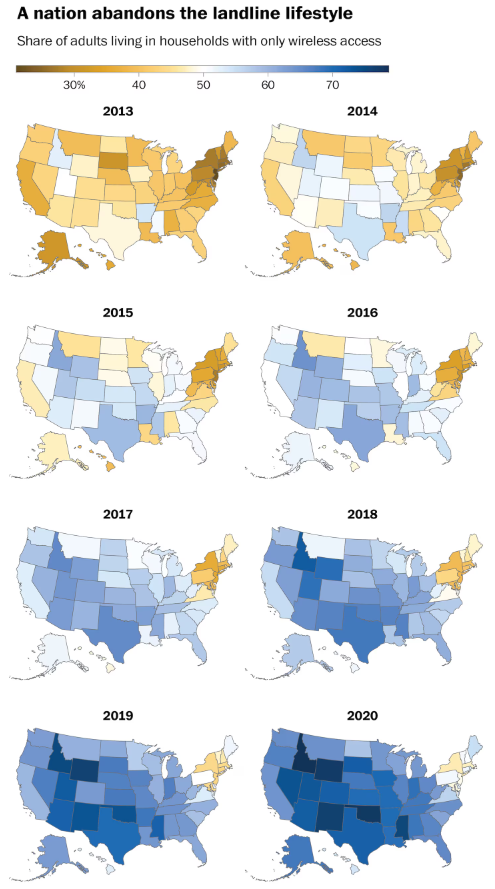
None of them turn out to be strongly related to phone ownership, however. Desktop and laptop usage is somewhat correlated with having a landline. But by that measure, the Northeast doesn’t stand out from other demographically similar regions of the country.
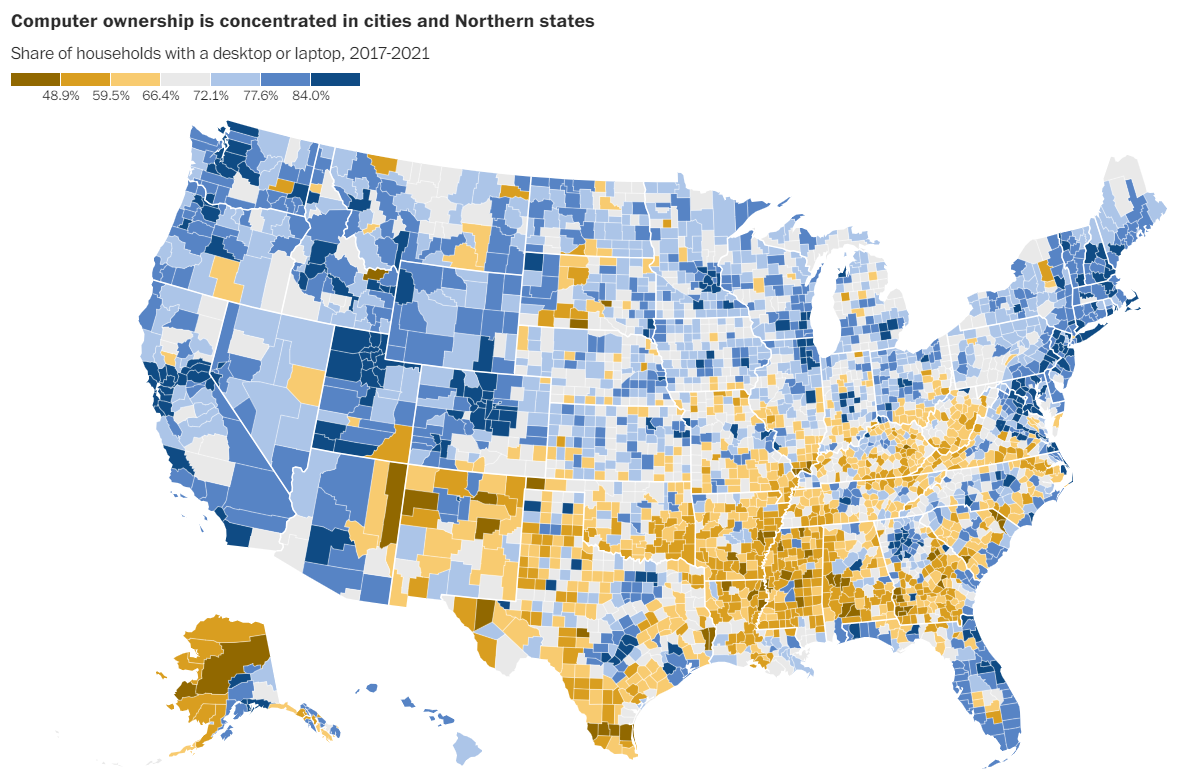
So the search began for other variables. Specifically, we needed something that would affect telephones but not other tech, and that would apply to customers in the Northeast but not to customers living anywhere else.
In retrospect, the answer is obvious. Telephone access doesn’t depend on demographics alone. Unlike most of the things we track, it’s also a business relationship. And since the breakup of Ma Bell in 1984, approximately one company (and its predecessors) has controlled landline phones in almost every Northeastern state.
That would be Verizon.
So has Verizon done something that might encourage the preservation of landlines? If anyone would know, we figured it would be Michael Hodel, research director at Chicago-based independent investment analysis heavyweight Morningstar. Hodel has watched telecom since Verizon was still Bell Atlantic, and had just subsumed the other major Northeastern Baby Bell, NYNEX.
Back then, soaring demand for fast home internet service pitted phone companies against cable providers to see who could capture the winner-take-all “triple play” market: phone, broadband and cable TV. And Verizon had positioned itself to be unusually successful.
Cable competitors such as Comcast started well behind Verizon and the other Bell babies on the landline side, of course. And Verizon got the jump on phone competitors like AT&T, which was never as successful in adding cable and landline service to its customer bundles.
Hodel points out that customers often abandon landlines at key transition points, such as when they switch from dial-up or DSL to broadband internet. But because Verizon pushed customers to adopt its Fios fiber-optic internet connections early on, they tended to switch in the mid-2000s when landlines were still de rigueur.
“Someone who’s had Fios broadband and a landline phone from Verizon hasn’t had much reason to switch providers and rethink which services they take,” Hodel told us via email. “I would also bet that Verizon has offered attractive bundle prices to keep customers taking its phone service over the years — the incremental cost of providing the service to a broadband customer is pretty minimal.”
If Verizon is already piping internet and cable into your home, it’s easy to tack on a landline; the extra fee is pretty much gravy. So, even as landlines slide into oblivion, Verizon seems happy to hold on to its voice customers in the Northeast as long as it can.
Howdy friends! The Department of Data runs on your curiosity. What do you wonder about: What familiar animals look supremely weird in the broader evolutionary context? How common are head lice these days? Who’s most likely to live in a multigenerational household? Just ask!
If your question inspires a column, we’ll send an official Department of Data button and ID card. This week’s buttons go to Sharon, of course, but also Joan Dionne of Murphys, Calif., and Bill O’Donnell in Chicago. Bill also asked about who uses paper checks, a presumably quantifiable query that we haven’t figured out how to answer yet.